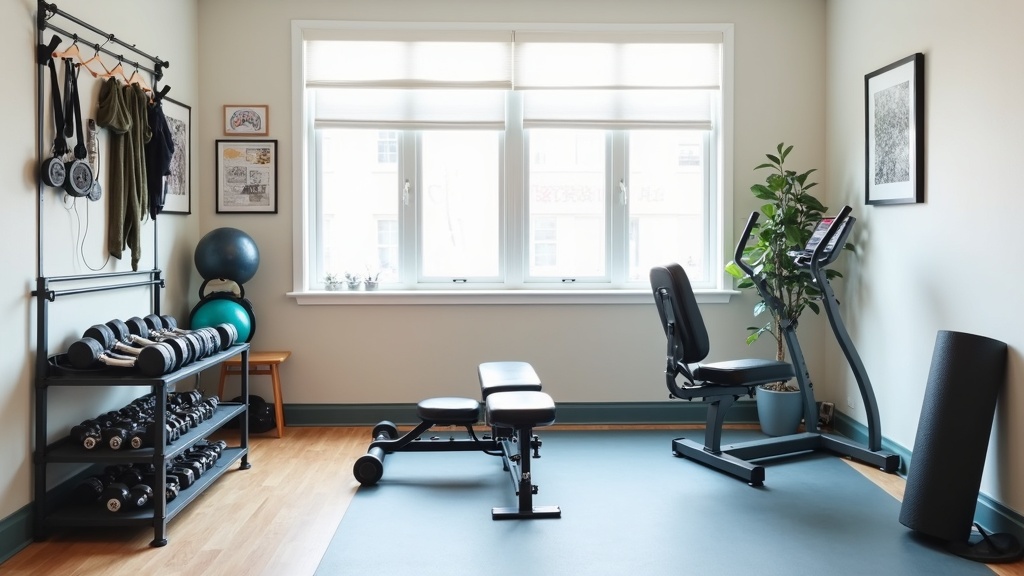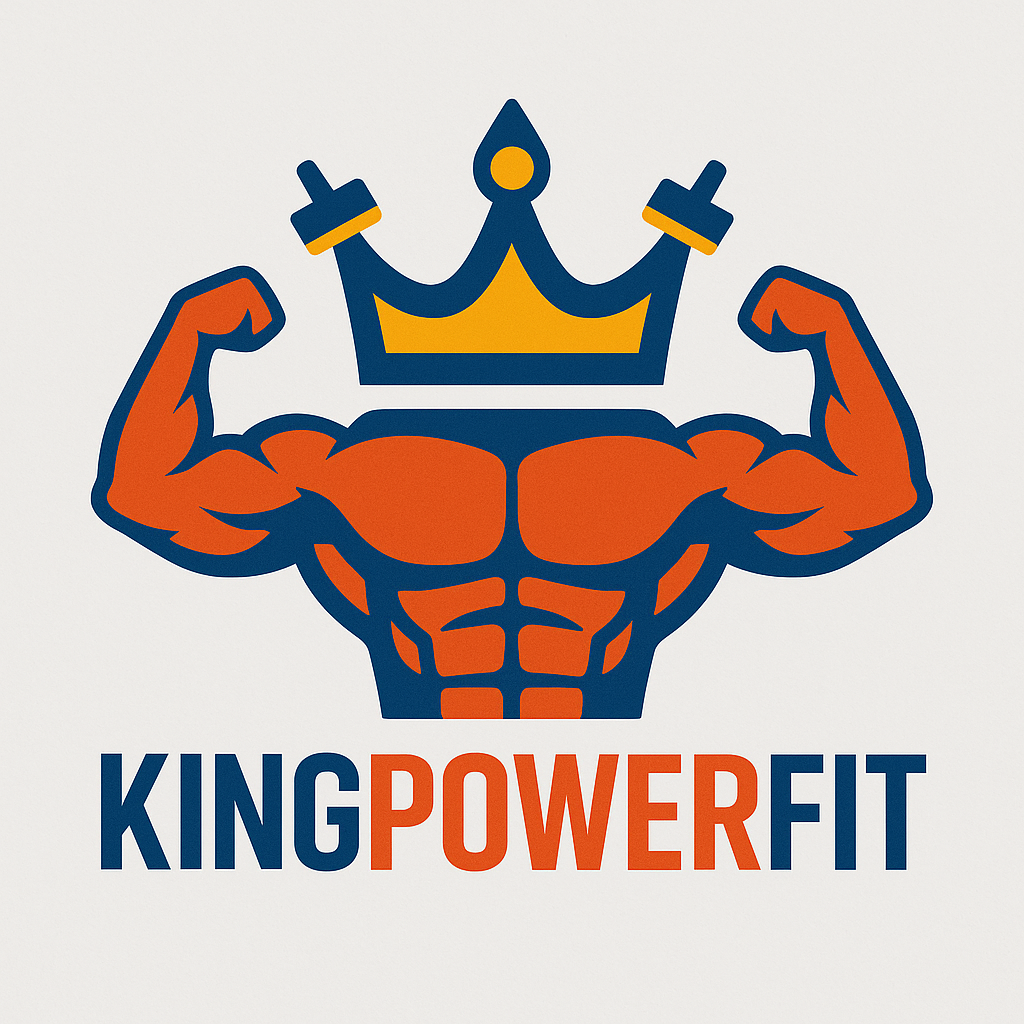Your home gym can be a total game changer. No waiting for equipment, no commute, and you get to pick the playlist every single time. Building a home gym setup that’s practical and actually gets you moving is easier than it might seem, but there’s a ton of gear on the market. I’m breaking it down to just the things most people find pretty useful, especially if space or budget are on your mind. This guide highlights the top 10 must-have equipment pieces for your home gym and why each one deserves a spot in your lineup.

The Value of a Well-Equipped Home Gym
Having a solid home gym setup is about more than just convenience. The routines you can stick to, and the flexibility to work out when you want, make a big difference. The global home fitness equipment market has seen major growth in recent years, especially after so many people realized how handy it is to skip the drive to the gym. A home gym also lets you customize your workouts for your fitness goals, whether that’s strength training, cardio, flexibility, or simply having a go-to way to move your body regularly.
Working out at home removes a lot of barriers. You don’t have to share gear, worry about gym hours, or feel self-conscious. With the right equipment, you create your own comfortable training space. Even if you have a small area to work with, smart equipment choices help you get a full body workout that can challenge both beginners and experienced athletes. Plus, you get to enjoy every rep at your own pace, free from distractions typically found in crowded gyms.
Getting Started with Home Gym Equipment
Filling your space with gym gear doesn’t mean buying every gadget you see. Most people benefit from focusing on basics first. The best equipment works for multiple types of workouts and doesn’t need a huge footprint. Here are a few terms you might run into while shopping for home gym equipment:
- Adjustable: Gear that can be changed to suit your strength level (think adjustable dumbbells or benches).
- Versatile: Equipment that offers ways to work different muscle groups or do different workout styles.
- Compact: Gear that folds up or stacks away is handy for smaller spaces.
The right mix of equipment helps target your whole body and lets you swap between strength, cardio, flexibility, and recovery work without turning your living room into a cluttered storage area. It’s all about making your space work for you while having fun with your fitness journey.
Top 10 Must-Have Equipment for Your Home Gym

These are the staples I always recommend adding to your home gym, whether you’re new to exercise or building out a seriously capable training zone.
- Dumbbells (Adjustable or Fixed): Super useful for tons of exercises, like curls, presses, rows, squats, and lunges. Adjustable dumbbells save space and let you increase weight as you get stronger.
- Resistance Bands: Incredibly versatile, lightweight, and easy to store. You can use them for strength, mobility, stretching, and rehab.
- Yoga or Exercise Mat: Makes any surface comfortable for floor workouts, yoga, Pilates, or stretching. It also helps protect floors from sweat or dropped weights.
- Kettlebell: A single kettlebell opens the door to swings, goblet squats, snatches, and more. They build power, endurance, and grip strength in one small package.
- Adjustable Bench: This is key for presses, seated curls, step-ups, and split squats. If it inclines and declines, you’ll have even more options without the need for extra equipment cluttering your space.
- Jump Rope: Affordable and effective for getting your heart rate up. A jump rope takes barely any space and delivers a tough cardio workout in just a few minutes, making it ideal for all fitness levels.
- Pull-Up Bar: Doorway models are easy to install and let you train your upper body. You can also use bands with it for added resistance or support, expanding your exercise possibilities even further.
- Medicine Ball: Handy for core work, dynamic movements, tossing, and floor slams. Look for a weight that challenges your core but lets you control each rep.
- Foam Roller: Perfect for recovery and self-massage. Rolling out sore muscles post-workout supports flexibility and can help ease tension, ensuring you stay active and injury free.
- Cardio Machine (Bike, Rower, or Treadmill): Space and budget will decide what works best for you. Even a compact folding treadmill or a simple under desk bike keeps your cardio game strong when the weather or time is tight.
Things to Consider Before You Buy
Jumping right into buying equipment seems exciting, but it’s worth thinking about a few practical points first. This helps avoid wasted money or ending up with stuff you rarely use.
- Space: Measure your available area and consider traffic flow. Will you be working out in your living room, garage, or basement? Do you need to pack the equipment away when you’re done?
- Budget: Start with basics, then expand as you go. It’s often smarter to buy a few high quality, versatile pieces than a bunch of cheap gear that might not last.
- Goals: Different equipment suits different training needs. Do you want to build muscle, focus on cardio, or prioritize mobility? Shape your kit around what keeps you motivated instead of simply grabbing trendy items.
- Noise: Some cardio machines or weights can be noisy, which matters if you’re in an apartment or sharing your space with others.
- Easy Maintenance: Gear that wipes down quickly and doesn’t need lots of upkeep makes your setup more appealing in the long run.
Dumbbells and Kettlebells
Free weights offer flexibility, letting you train almost every muscle group. Adjustable sets are a smart investment for small spaces and growing strength. Kettlebells add a more dynamic, explosive option, so they’re awesome for functional fitness and HIIT workouts. Try mixing both in your routine for creative exercise options and added challenge as you progress.
Cardio Equipment
If your budget and space have limits, start small with a jump rope or even bodyweight circuit routines. If you’re able to invest in a machine, try it out in a store if possible to make sure it’s comfortable for your stride and suits your fitness style. Thinking about what you’ll actually use regularly will help you avoid buyer’s remorse later.
Exercise Mat and Foam Roller
Mats keep things comfy for groundwork, protect your floors, and add grip. Foam rollers are one of those tools you appreciate more the longer you use them. They’re great for speeding up recovery, helping you bounce back after tough workouts and minimizing muscle soreness. Make foam rolling part of your warm up or cooldown for the best results.
Tips for Making the Most of Your Home Gym
Your equipment works best when your space matches your vibe and goals. A bit of setup goes a long way in keeping you consistent and motivated:
- Keep It Organized: Use storage racks, wall hooks, or bins to keep everything tidy and easy to access. Having a clean setup means you spend less time hunting for gear and more time moving.
- Create a Motivating Atmosphere: Good lighting, a favorite playlist or speaker, and maybe a wall mirror boost your energy and help check your form. Decorate the area with motivational quotes or posters if that gets you moving.
- Schedule Workouts: Put sessions on your calendar like any other important appointment. Consistency is really important for progress, so treat workout time as nonnegotiable.
- Safe Setup: Make sure there’s room for movement and nothing to trip over. You can train hard without distractions or hazards when your space is cleared and safely arranged, reducing the risk of injury.
It pays off to learn the basics of each piece in your kit. Follow online guides or video tutorials if you’re unsure of the correct form or want to try new routines. That way, you get more out of even the simplest equipment, and you stay excited about your workout routine.
Real-World Examples and Use Cases
Home gym equipment isn’t just about fitness enthusiasts. I’ve seen all kinds of people, from parents squeezing in a 20 minute HIIT between meetings to retirees doing yoga and balance work on a mat, track down what works in their home spaces. The mix of a few well chosen tools lets you transition easily between routines: cardio bursts on a jump rope, strength circuits with free weights, and stretches or mobility drills to cool down. Even a minimalist setup with resistance bands, a mat, and a pull up bar gives you ways to tackle workouts at any level.
- Strength Work: Use dumbbells, kettlebells, and bands for squats, presses, and rows targeting all major muscle groups.
- Cardio Training: Jump ropes and compact machines let you sneak cardio in fast, no matter your schedule. You don’t need hours to make progress. Just five to ten minutes of focused work can deliver real results over time.
- Recovery and Mobility: Mats and foam rollers keep your joints and muscles in great shape, reducing the risk of injury and speeding up recovery. Building stretching and self massage into your weekly habit keeps you moving smoothly.
Frequently Asked Questions
Here are a few common things people ask when building their home gym:
Question: How do I make the most of a small space for my home gym?
Answer: Stick with compact, portable gear like resistance bands, adjustable dumbbells, foldable benches, and a mat. Store items vertically on shelves or in bins when not in use. Multiuse equipment saves room and keeps things flexible.
Question: Should I invest in high end gym equipment for my home?
Answer: Start with basics that match your fitness needs and budget. You can always upgrade as you go, or when you know what you like best. Sometimes, simple equipment ends up being used most consistently over time.
Question: Is it safe to work out at home without a trainer?
Answer: If you learn the right form for key exercises, use safe weights, and pay attention to your body’s signals, working out at home can be very safe. Online tutorials or virtual trainers help if you want more guidance, and checking in with a professional before you start something new is always smart.
Final Thoughts
Picking the right equipment makes a big difference in building a home gym that keeps you moving and motivated. The best setup is the one you’ll use regularly and that makes working out feel simple and fun. Whether you fill your space right away or add a piece at a time, these must-haves lay a solid foundation for all kinds of training routines at home.
Find what works for you, have fun with your space, and keep exploring different workout ideas. The routines you build now will pay off every time you step into your home gym. With consistency and a few quality pieces, you’ll find yourself actually looking forward to workouts instead of dreading them, making it easier to reach your personal health and fitness goals.
